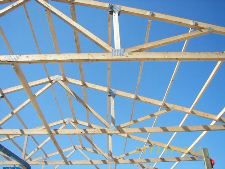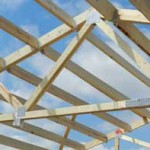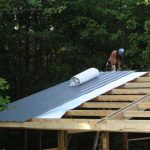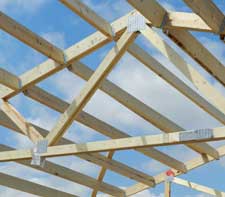We Don’t Always Do Things Perfect, But We Do Listen Part III
Last summer Hansen Pole Buildings Supplied a pole building kit package to a client who experienced a few challenges and took the time to address them.
Here is the email I was responding to: (Items #1-3 were addressed on the last two days’ blogs.)
“On the design flaws, and other issues, here is what I have experienced.
“4-Plan Book
Things need to be placed in a more appropriate order. I needed to get the concrete in so I had a clean place to work during construction. Missed the piece in the door section about making sure to cut out the opening for the door before the concrete and lay the cut out section down during this time. My fault for not being on top of it. I also did not see any reference, I might have missed it, about putting extra 2X4’s between the girts on the door posts. Went to install the first man door and there was nothing to screw it to. I also cannot figure out why I had to install two 4X4 for each four foot door. Why was one of the attachment points not the 4X6 post?
I know see that I can no longer log into my account, project finished it says. I asked, in an email, to keep my account and customer login open because my project was not completed and I still needed access to this site.”
My response: We DO go through some degree of assisting clients to prepare for their new pole building project. This is one of the reason you (as well as any other person who invests in a Hansen Pole Building kit package and their builder – if contracted) have access to the online version of the Construction Manual virtually immediately upon order. In the introduction is:
“If new to pole building installations, read the book from cover to cover. You will quickly understand what has to be done, and in what order, to complete a successful pole building installation.”
To be doubly sure instructions are followed, a print version of the Construction Manual was also mailed to you. We try to leave accounts open for a reasonable amount of time following delivery of all materials. With Plans and Construction mailed in print version, I am unsure as to why you’d need the online account.
The chapters of our Construction Manual are placed in the order in which the majority of buildings are erected. In most cases, concrete slabs are not poured until the building shell is completed. This is why it is listed as the 18th chapter. We’d appreciate your time to provide us with what you feel the most appropriate order might be. For those who don’t follow the “usual” order, the index may help in finding the instructions you need at any given point.
Even with the wealth of information in the Construction Manual, your building plans also showed the “turn down” cut out opening on Page S-5.
In Chapter 23 of the Construction Manual, “Entry Door Installation” gives this instruction:
“Nail 2x dunnage or scrap blocking to columns on each side of entry door at locations of any pre-punched holes in jambs flush to door jambs.”
The four foot entry doors for your building were located per your order and matched to the door locations sheet you approved. You specified them to be placed at six and thirty feet from the left corner of the right sidewall. Each of these locations would not have placed one side of the door against a structural roof supporting column – hence the need for two 4×4. One of the main reasons we post pdf’s of your building plans for you to review before printing and mailing them out, is for you to look at door locations and see if you want to move any of them. At this point we would have moved the doors to attach to a 4×6 (if you wished), with the additional drafting at no charge to you. We have, in the past, gone ahead and moved doors a few inches or up to a foot to put them on a 4×6, as you suggest, only to have clients say “put them where I told you to” and they wanted the extra 4×4’s. Because we can’t guess which client will choose decide either way, we show you where you initially stated you wanted them, and then allow you time to change them. At no charge.
“5-Ceiling Load Trusses
 I know that you sub this out and are not in the engineering process but, I have a few issues with the trusses. I ordered trusses that were supposed to be engineered for a bottom chord load of 5 PSF so I could put in a ceiling. The trusses arrived and the specs were wrong, no bottom chord load. When I called the truss company, after talking to you guys (Rick who has been awesome), they said the trusses were fine and they would send over a new spec sheet. So, I paid extra for ceiling load trusses that were engineered to handle a larger load but in reality were no different than trusses that are not engineered to handle a load. Does this make any sense to you? I am really questioning the integrity of the truss company but what am I going to do, I am not an engineer. The trusses were also made with terrible materials, were not identical (this did line up correctly when put together) and were made with 2X6 construction which did not work well on the carport section. “
I know that you sub this out and are not in the engineering process but, I have a few issues with the trusses. I ordered trusses that were supposed to be engineered for a bottom chord load of 5 PSF so I could put in a ceiling. The trusses arrived and the specs were wrong, no bottom chord load. When I called the truss company, after talking to you guys (Rick who has been awesome), they said the trusses were fine and they would send over a new spec sheet. So, I paid extra for ceiling load trusses that were engineered to handle a larger load but in reality were no different than trusses that are not engineered to handle a load. Does this make any sense to you? I am really questioning the integrity of the truss company but what am I going to do, I am not an engineer. The trusses were also made with terrible materials, were not identical (this did line up correctly when put together) and were made with 2X6 construction which did not work well on the carport section. “
My response: I spent well over 20 years in the prefabricated wood roof truss industry (owning my own truss plants for many of those years), so I can speak to the truss designs with some degree of authority (if you have the desire to know more about my background it can be read here: https://www.hansenpolebuildings.com/blog/2011/06/before-the-pole-barn-guru/). The original truss drawings provided were for the trusses to be built, errantly with the lighter ceiling load specified. The physical changes of any given truss to carry greater loads can be subtle, and not noticed until one would examine with a highly detailed eye. Most commonly some lumber members may be of higher grade and/or some or all of the pressed steel connector plates may be of a larger size.
In short, the drawing sent to you initially by the truss company was incorrect (which was corrected before your trusses were built), but the trusses were manufactured with the 5 psf exactly as you requested, and a new drawing with the correct loading was sent to you. The truss company didn’t “fudge” on your trusses, they mistakenly sent the wrong drawing. If you didn’t get what you paid for – we’d have had the truss company remake them. We don’t fudge, and we do what we can to make sure the companies who manufacture things for us don’t either.
Truss manufacturers are subject to meeting rigorous manufacturing standards, which are discussed more in depth at: https://www.hansenpolebuildings.com/blog/2014/07/truss-2/
Chapter 3 of the Construction Manual specifically addresses your claim of “made from terrible materials” which is not a measureable standard:
“Some discussion will be made here about “allowable defects” in lumber. Wood is an organic material. While produced in a “factory” environment (a sawmill), lumber is subjected to naturally occurring defects, which are accounted for in the grading rules. These characteristics are taken into account in the strength values for allowable design.
Lumber used in trusses falls into this same discussion. Truss lumber is chosen for strength characteristics, not due to “pretty looks”. If the expectation is the trusses were to be built from clear, vertical grain, knot and wane- free lumber, a severe disappointment is going to occur. Lumber “appearance” is NOT a reason to reject any truss.”
When trusses are delivered, photographs can be taken and emailed to us for our assessment. This is why we have the 48 hour “inspection and reporting” time period. We really encourage clients to report things they see as “wrong” or “made from terrible materials” so we can address them immediately with our suppliers. Reporting problems after the building is constructed makes it pretty much impossible for us to address any issues. Photographs of things like this give us a lot of leverage in getting things replaced (at no cost to you) if your claim is legitimate – but has to be documented and supported by evidence.
Mike the Pole Barn Guru – come back tomorrow to read the last installment of issues posed by a construction challenged client.









